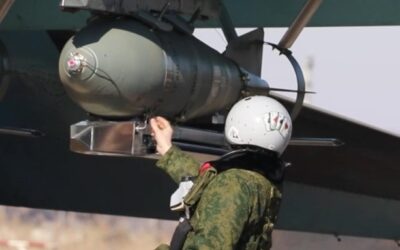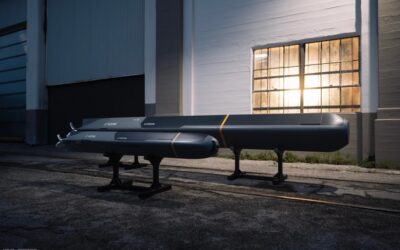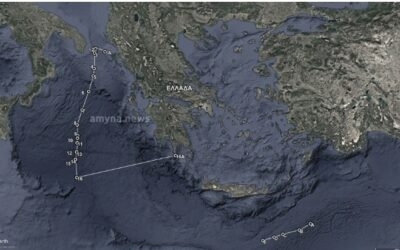Ukraine has deployed a new electronic warfare system that is reshaping the dynamics of aerial combat on the battlefield.

The Ukrainian Armed Forces have begun testing the Black Widow 2 USV drone.
Specifically, according to a report on the Ukrainian Militarnyi website, two brigades from Ukraine’s armed forces have begun military trials of the Black Widow 2, a new first-person view (FPV) unmanned surface vehicle (USV-drone).
Developed by the Brave1 technology cluster, it was designed to carry out reconnaissance, surveillance, and offensive “kamikaze” operations on rivers and inland waterways.
The Black Widow 2 is a battery-powered, cost-effective, versatile, and lightweight platform that is one meter long and weighs 8 kg, with a maximum speed of 40 kph and an operational range of up to 10 km. The rechargeable onboard battery provides the USV with several hours of run time and can be put on standby to allow it to patrol for a time till it detects hostile targets to appear.
The USV is equipped with a camera, mounted on a rotating gimbal, that can rotate both horizontally and vertically and has a day / night capability. It can carry a three-kilogram explosive payload that allows it to be used as a kamikaze USV against small rigid and inflatable enemy boats.
Also read: Distributed Lethality | Ukraine’s A2/AD example may be applied with made-in-Cyprus USVs
The developers say that the river drone is just like an FPV but works on the water. The request for the manufacturing of the USV was commissioned by the Ukrainian military in 2023 to combat the movement and resupply of Russian troops that occupied the islands in the Dnipro River.
As reported, at first, the USV was intended to design a version of the Black Widow that could clear waterborne anchored mines as well as a larger and more capable version of the USV. The new drone reportedly costs less than $2,400, and the company will soon be able to produce around 100 systems per month.
The control of the rivers in Ukraine is a strategic asset for those who reign over them during the ongoing conflict since 2022. These waterways, particularly the Dnieper River, act as natural barriers and logistical corridors, influencing operations at tactical and strategic levels.
One of the most significant issues revolves around the control and disruption of river crossings. Bridges over rivers like the Dnieper and Seym are pivotal for moving troops, equipment, and supplies. The deliberate destruction of these bridges, such as the Ukrainian strikes in the Kursk region, has effectively disrupted Russian supply chains and complicated logistics.
Conversely, Russian forces have targeted river crossings to stall Ukrainian Armed Forces’ advances, like the destruction of the Kakhovka Dam, which led to widespread flooding. This flooding not only altered the terrain but also created significant operational and humanitarian challenges, affecting both military mobility and civilian populations.
Also read: Exercise ORION 2024 | Unveiling of the Greek-designed USV VTR
READ MORE
Anduril | Introduction of the Torpedo-Inspired Underwater Kamikaze Drone Copperhead
Anduril has unveiled a torpedo-inspired underwater attack drone in response to emerging maritime threats.
Gizelis S.A. Enters the Defence Sector | Strategic Partnership with Israeli Company Aharon Yosef – אהרון יוסף
Gizelis S.A. has officially announced its entry into the defence industry through a strategic partnership with the Israeli company Aharon Yosef.
Greece | Declaration of EEZ in the Ionian Sea and Presentation of Maritime Spatial Map
In an initiative with significant geopolitical and economic implications, Greece has declared an Exclusive Economic Zone (EEZ) in the Ionian Sea…
Lima | Ukraine’s Game-Changing Jammer Against Russian Glide Bombs
Ukraine has deployed a new electronic warfare system that is reshaping the dynamics of aerial combat on the battlefield.
Latvia | Withdrawal from the Ottawa Treaty Banning Anti-Personnel Mines
Latvia’s parliament has approved the country’s withdrawal from the Ottawa Convention banning anti-personnel mines, citing the need to bolster national…
THEON | Publication of the Annual Financial Report for 2024
THEON INTERNATIONAL Plc (THEON) has recently published its Annual Financial Report for 2024, with the results reflecting a very strong…
Cyprus | Major General Bewick Sworn in as New British Base Commander
Major General Tom Bewick was officially sworn in as the new Area Manager of the British Bases in Cyprus during a ceremony…
OPINION | TIME OF DECISION FOR EUROPEAN DEFENCE AND SECURITY
Although the defence, security, and protection of the territorial integrity and independence of the member states of the European Union (EU) remain primarily…


















